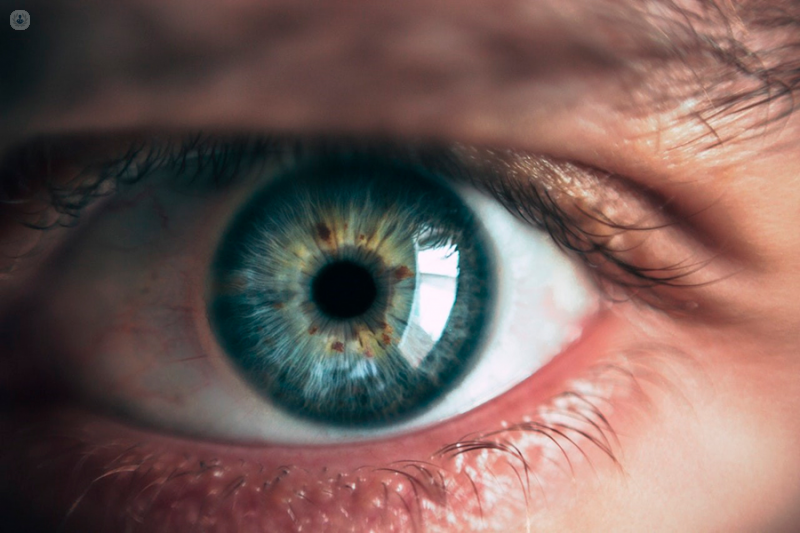Intravitreal injection: what is it used for?
Autore:What is an intravitreal injection, and what is it like to have one, and how many do you need? We asked leading Birmingham-based ophthalmologist Mr Samer El-Sherbiny to take us step-by-step through the process:

What is an intravitreal injection?
Intravitreal injection is a technical term that describes an injection into the cavity of the eye that contains the vitreous. This is the clear gel that occupies about 80% of the volume of the eye.
When is it used?
Most commonly an intravitreal injection is used for delivering drugs for a variety of conditions that affect the retina. The retina is the lining of the inside of the eye beyond the coloured part of the front of the eye.
An injection is necessary to deliver drugs at a high-enough concentration and quickly enough to what is an otherwise well-protected structure of the retina. Using drugs by mouth or in the vein would take much longer, may not arrive in sufficient concentration to the area required, and may expose patients to unnecessary side effects. The injection attempts to avoid all of these, which is particularly important for conditions that require multiple applications of medication.
An intravitreal injection can also be used in the early presentation of eye conditions that require a quick administration of drugs.
The commonest conditions that we use intravitreal injections for are:
- AMD
- Diabetic retinopathy
- Conditions that affect the circulation of the retina, such as retinal vein occlusion
There are a large variety of less common conditions – but these are the most common.
What does it involve?
The procedure is described by patients as though someone is pressing on the eye, as opposed to cutting or a pinprick sensation. This is because after due preparation with antiseptic using sterile equipment, a very fine and very short needle is used to inject the drugs into the eye, using a specific measure to ensure that the site of the injection is chosen carefully to avoid damage to vital structures of the eye, such as tearing the retina or damaging the natural lens of the eye.
We use landmarks to specify exactly where we need to make the injection, which is made through the white of the eye. This means that you do not have to worry about seeing the injection happen!
The actual injection – provided that the patient is able to cooperate and there are no other problems – takes around 2-3 minutes. However, this is preceded by safety checks, such as confirming the patient identity and the side of the eye, the drugs and dosage, and the appropriate preparation by hand washing, sterilising, and cleaning the site. Then following the injection we need to make sure that the pressure in the eye hasn’t risen sharply to affect the vision or damage the structures within the eye. Once this has all been established the patient is given a series of instructions to make sure the eye settles well. Taken together, the process takes around 10-15 minutes from start to finish.
Some patients may require treatment to both sides. If so, each eye is dealt with using a completely different sets of instruments with mandatory cleaning between the first and second eye. This can make the total treatment time closer to 25-30 minutes.
How often is it required?
Treatment is usually initiated using three injections at monthly intervals, following which the interval between subsequent injections is extended gradually, depending on the clinical assessment. For the three main conditions, most patients can expect to receive between 5-7 injections in the first year, with ongoing injections for another 3-5 years. If needed afterwards, the aim is to give the minimum number of injections while keeping the condition of the eye stable.
What happens immediately afterwards?
Most patients describe the eye as “bruised”, or describe a pressure sensation for 1-2 days. This is simply due to the physical penetration of the eye and possibly irritation from antiseptic.
The eye may look a little pink for the first couple of days, and depending on the clinic’s policy, lubricating eye drops may be dispensed. In the past it was common practice to give antibiotic eye drops after injection, but that is much less common now in the UK. You will be advised not to rub the eye, not to wash the eye and not to engage in vigorous exercise for 48 hours, following which they may resume normal daily activity.
Finally, you should seek emergency support if you experience any of the following:
- loss of vision
- increasing redness
- pain in the eye – this could indicate infection.
Mr Samer El-Sherbiny is a leading Birmingham ophthalmologist specialising in age-related macular degeneration (AMD), diabetic retinopathy, and retinal diseases. To see Mr El-Sherbiny’s availability and book a consultation, click here.


